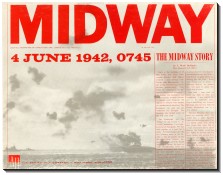
Midway is a board wargame published by Avalon Hill in 1964 that simulates the Battle of Midway during World War II.

Axis & Allies is a series of World War II strategy board games. The first version was initially published in 1981 and a second edition known colloquially as Axis & Allies: Classic was published in 1984. Played on a board depicting a Spring 1942 political map of Earth divided by territories, players take the role of one or more of the five major belligerents of World War II: the Axis powers of Germany and Japan; and the Allied powers of the Soviet Union, the United Kingdom, and the United States. Turns rotate among these belligerents, who control armies of playing pieces with which they attempt to capture enemy territories, with results determined by dice rolls. The object of the game is to win the war by capturing enough critical territories to gain the advantage over the enemy.

Panzer General is a 1994 computer wargame developed and published by Strategic Simulations Inc. (SSI). It simulates conflict during World War II. The designers of Panzer General were heavily influenced by the Japanese wargame series Daisenryaku.

Gary Grigsby is a designer and programmer of computer wargames. In 1997, he was described as "one of the founding fathers of strategy war games for the PC." Computer Games Magazine later dubbed him "as much of an institution in his niche of computer gaming as Sid Meier, Will Wright, or John Carmack are in theirs."

Pacific General is a computer wargame depicting famous battles of the World War II Pacific campaigns. It was published by Strategic Simulations in 1997 using the same game engine of the earlier and successful Panzer General for Windows 95. It was re-released on GOG.com in May 2015.
Turn-based tactics (TBT) is a video game genre of strategy video games. They are turn-based simulations of operational warfare and military tactics in generally small-scale confrontations as opposed to more strategic considerations of turn-based strategy (TBS) games. Turn-based tactical gameplay is characterized by the expectation of players to complete their tasks using only the combat forces provided to them in a generally realistic manner.

Operation Vigorous was a British operation during the Second World War, to escort supply convoy MW11 from the eastern Mediterranean to Malta, which took place from 11 to 16 June 1942. Vigorous was part of Operation Julius, a simultaneous operation with Operation Harpoon from Gibraltar and supporting operations. Sub-convoy MW11c sailed from Port Said (Egypt) on 11 June, to tempt the Italian battlefleet to sail early, use up fuel and be exposed to submarine and air attack. MW11a and MW11b sailed next day from Haifa, Port Said and Alexandria; one ship was sent back because of defects. Italian and German (Axis) aircraft attacked MW11c on 12 June and a damaged ship was diverted to Tobruk, just east of Gazala. The merchant ships and escorts rendezvoused on 13 June. The British plans were revealed unwittingly to the Axis by the US Military Attaché in Egypt, Colonel Bonner Fellers, who reported to Washington, D.C. in "Black"-coded wireless messages; it was later discovered that the Black Code had been broken by the Servizio Informazioni Militare.
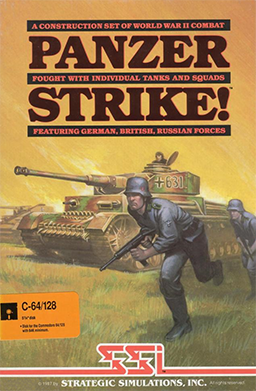
Panzer Strike is a 1988 tactical wargame that simulates small unit actions during World War II. It was made for Apple II and Commodore 64 and was released by Strategic Simulations.

North Atlantic '86 is a 1983 computer wargame written by Gary Grigsby and published by Strategic Simulations. The game covers a hypothetical conflict between NATO and the Soviet Union. A Macintosh version was released in 1986.
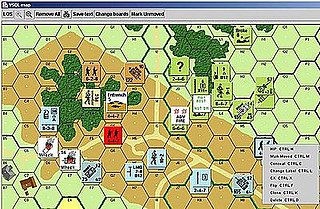
A computer wargame is a wargame played on a digital device. Descended from board wargaming, it simulates military conflict at the tactical, operational or strategic level. Computer wargames are both sold commercially for recreational use and, in some cases, used for military purposes.

Gary Grigsby's Pacific War is a 1992 strategy wargame released by Strategic Simulations, Inc. It covers World War II in the Pacific between the Japanese Empire and the Allies, which include the United States, the British Empire, the Netherlands, Australia, New Zealand, Canada, the Philippines, and China. The main map of the game stretches from north of the Aleutians to southern New Zealand and Australia, and from the eastern coast of India to the West Coast of North America. It includes aircraft carrier operations, amphibious assaults, surface bombardments/engagements, strategic bombing, kamikazes, and the submarine war against naval and merchant shipping.
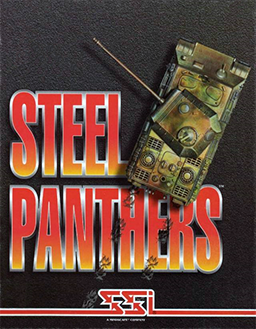
Steel Panthers is a 1995 computer wargame developed and published by Strategic Simulations. Designed by Gary Grigsby and Keith Brors, it simulates ground warfare during World War II, across the Western Front, Eastern Front and Pacific Theatre.

Torpedo Fire is a turn-based submarine warfare game written by John Lyon for the Apple II and published by Strategic Simulations in 1981.

Kampfgruppe is a computer wargame designed by Gary Grigsby and published in 1984 by Strategic Simulations for the Apple II, Atari 8-bit computers, and Commodore 64. Kampfgruppe is a game of tactical-scale combat on the Eastern Front. An MS-DOS port was released in 1987 followed by an Amiga version in 1988.

Guadalcanal Campaign is a 1982 computer wargame developed by Gary Grigsby and published by Strategic Simulations, Inc. (SSI). It was Grigsby's first released game and has been cited as the first monster wargame made for computers.

U.S.A.A.F. - United States Army Air Force is a 1985 computer wargame designed by Gary Grigsby published by Strategic Simulations.

Steel Panthers III: Brigade Command 1939–1999 is a 1997 computer wargame developed and published by Strategic Simulations, Inc. It is the third game in the Steel Panthers series, following Steel Panthers (1995) and Steel Panthers II: Modern Battles (1996). Like its predecessors, it was designed by Gary Grigsby and Keith Brors.

War in the Pacific: The Struggle Against Japan 1941–1945 is a 2004 computer wargame developed by 2 by 3 Games and published by Matrix Games. Designed by Gary Grigsby and Keith Brors, it is the successor to Gary Grigsby's Pacific War (1992) and Uncommon Valor: Campaign for the South Pacific (2002).
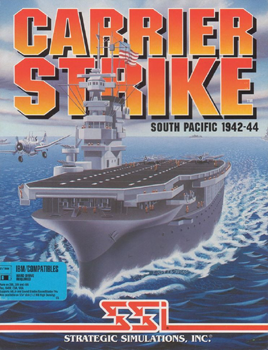
Carrier Strike: South Pacific 1942-44 is a 1992 computer wargame designed by Gary Grigsby and published by Strategic Simulations Inc. It is a successor to Grigsby's earlier title Carrier Force.

Overrun! is a 1989 computer wargame designed by Gary Grigsby and published by Strategic Simulations.



















